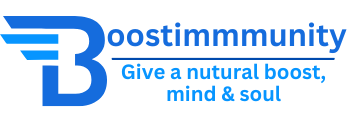Sukhasana, or the Forward Bend, is a very relaxing yoga posture.
Cross your right shin in front of your left knee as you sit in Easy Pose. Make a little forward curve. 5 deep breathes, then switch shins. Straighten both legs and place your hands on the floor in front of you to do a Standing Forward Bend.
Exhalation is amplified as one bends forward, generating a state of calm.
Inverted Shoulder Blade Stretch (Uttanasana) from a Standing Position
As we lean forward, our attention naturally shifts inward, and our breathing becomes more diaphragmatic and exhalatory, all of which contribute to a reduction in stress. Putting the arms behind the back is also a great way to relieve stress in the shoulders. Hamstrings that have become tight from prolonged use of the “fight or flight” response might also benefit from this stance.
Pull your kneecaps up toward your hips when you bend forward from a standing position by contracting the muscles on the front of your thighs. Fingers interlocked, arms at your sides, raise them up and out to the side. After five breaths, switch the interlace by placing the other index finger on top. Put your thumbs on top of your posterior while bringing your hands to your hips. To help you stand up, you should slam the flesh of your buttocks down against the floor. Make a colossal leap to the right.
Open-Legged Forward Bend in Standing Position (Prasarita Padottanasana)
As a forward bend, this position opens the chest and shoulders, but the added support of resting the head on a prop alleviates some of the strain on the brain.
In this stance, you should point your toes so that they are parallel to the ground and rest your hands on your hips. Start in a standing position, elevate your chest, and then, as you exhale, bend forward from the hips. Spread your fingers and toes, and place your hands on the floor at shoulder width apart. Allow your head to fall to the ground. A block can be used to support your head if it is too high for the ground. Maintain the position for 10 deep breaths. Take a deep breath in, round your back, bring your hands to your hips, and let the flesh fall away from your buttocks as you rise up. To go into Child’s Pose, bring your heels together and walk toward the front of your mat. Place your head on the floor in front of you while crouching on your knuckles and heels.
I find Rabbit Pose (Sasangasana) relaxing.
Safety. It almost seems natural. The exhalation and ball-curling calm you. When you interlace your hands behind your back and lift and drop your hips, you relax your shoulders and rock.
From Child’s Pose, interlace fingers behind back, elevate hips, and roll to crown. Keep your foot tops down to control head weight. Remove your hands from your back. Lower, alter the interlace, elevate your hips, and roll again. Change the interlace 3 times on each side. Breathe and move rhythmically.
Vajrasana with Garudasana arms
This is a comfortable sitting position with Eagle arms for shoulder relaxation. This stance develops a wide back, the antithesis of tension. We push and squeeze to go forward.
Kneel and rest on heels. Bend your elbows and pull your right elbow into your left, palms facing each other. Pass your right hand in front of your left and bring the palms together, thumbs toward your nose (grip your wrist if you can’t). Hold for 5 breaths, then switch arms.
Side-bend
This yoga stance relieves tension in the neck, head, and shoulders. Drop your head to your ear with one arm above your head and one hand on the floor. Reverse
Neck, head, shoulders, and hamstrings are released. It enhances exhalation and turns inward, making it a stress-relieving yoga position.
Face the mat. Swing your legs above your head and rest your toes. 10-breath pause. Slowly roll out of Plow, holding your head back so it doesn’t whip forward when you land.
Lay on your back, legs straight, heels apart. Wiggle until comfortable, then place your palms beside your torso. You must test the blocks on your head to realise the consolation and calm they bring. The block’s delicate touch relaxes the nervous system in the same way a loving touch may melt you. It lowers stress-related head pressure. Set a brick 3 inches above your crown (the block should be at its highest height). Angle the second block so it rests on your forehead. 5–10 minutes.

